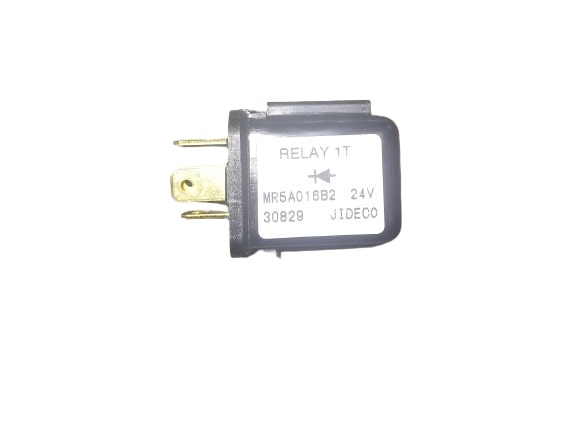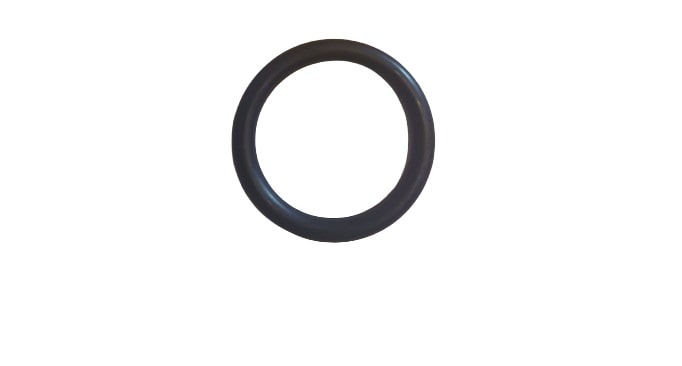Dismantled parts from PC200LC-8M0 C15621.
The Boom Top Pin of the Komatsu PC200LC-8M0 excavator is a crucial component in the machine's boom assembly, facilitating the pivotal connection between the boom and the arm (stick) of the excavator. This pin allows for the smooth articulation of the boom during digging, lifting, and other excavation operations. Here's a detailed breakdown of the Boom Top Pin:
1. Function and Purpose:
- The Boom Top Pin serves as a pivot point at the top of the boom, connecting the boom to the arm (stick). It allows the arm to move up and down as the boom raises and lowers.
- The pin provides structural stability to the boom and arm connection, ensuring smooth movement and bearing the heavy loads encountered during excavation work.
- It supports the high forces generated by digging, lifting, and other operations, transmitting those forces safely between the boom and the arm.
2. Location:
- The Boom Top Pin is located at the upper part of the boom, where it connects to the boom-foot bracket of the arm. This is the joint that allows the arm to pivot relative to the boom.
3. Components of the Boom Top Pin Assembly:
- The Pin: A cylindrical, hardened steel shaft that fits into the bore of the boom and arm connection points.
- Bushings: Located inside the pin housing, bushings reduce friction and wear between the pin and the boom/arm connection. They ensure smooth movement and protect the structural components from excessive wear.
- Retaining Rings or Clips: These secure the pin in place and prevent it from sliding out of its position.
- Grease Fittings (Zerk fittings): These fittings allow for regular lubrication of the pin to minimize friction and wear, ensuring smooth articulation and a long service life.
- Seals: Dust seals or O-rings are often installed around the pin to keep dirt, moisture, and other contaminants out of the pin and bushing assembly.
4. Material and Construction:
- The Boom Top Pin is typically made from hardened steel or other high-strength metals to withstand the immense forces and stresses encountered during operation.
- Bushings are made from wear-resistant materials, such as bronze or hardened steel, to reduce friction and allow smooth movement of the pin.
- Seals are made from durable rubber or synthetic materials to protect the pin assembly from contaminants.
5. Operation:
- The Boom Top Pin acts as the pivot point that allows the boom and arm to move relative to each other. As hydraulic cylinders extend or retract, the arm moves up or down around this pivot point.
- It carries the load of the arm, as well as any attachments and materials being handled by the excavator. This means the pin must endure high levels of stress and pressure during operation.
6. Importance of Lubrication:
- The Boom Top Pin is subjected to significant friction, especially during continuous movement of the boom and arm. Proper lubrication through grease fittings is crucial to:
- Reduce wear on the pin and bushings.
- Ensure smooth movement between the boom and the arm.
- Prevent seizing of the pin, which can result in damage to the boom or arm structure.
- Regular lubrication also helps to keep out dirt, debris, and moisture, which can cause corrosion or accelerated wear.
7. Maintenance:
- Inspection: Regular inspection of the boom top pin is essential to check for signs of wear, cracks, or damage. Excessive wear can lead to poor articulation of the boom and arm, and, in extreme cases, may cause failure of the pin or surrounding components.
- Lubrication: Frequent lubrication through the grease fittings is necessary to maintain the smooth operation of the boom and arm pivot point.
- Replacement: If the pin or bushings show signs of wear or damage, they should be replaced promptly to avoid further damage to the boom or arm.
8. Signs of Wear or Failure:
- Excessive Play or Movement: If there is too much free movement between the boom and the arm, it may indicate wear in the pin or bushings.
- Noisy Operation: Grinding, squeaking, or clunking sounds during boom or arm movement can indicate a lack of lubrication or worn components.
- Visible Wear: Grooves, cracks, or deformation of the pin itself or the bushings indicate the need for immediate maintenance or replacement.
- Hydraulic Cylinder Issues: If the boom or arm doesn't move smoothly or struggles during operation, it could be a sign of a worn or damaged boom top pin affecting the alignment and movement of the components.
9. Replacement and Service:
- Removal and installation of the boom top pin require the use of specialized tools. It is important to relieve tension in the hydraulic system and ensure the boom is properly supported before removing the pin.
- After replacement, the pin should be lubricated and the bushings inspected to ensure they are functioning properly.
10. Durability and Design:
- The Boom Top Pin is designed to be highly durable, capable of handling significant stress and continuous motion. However, due to the heavy-duty nature of excavator operations, wear and tear are inevitable over time.
- Regular maintenance helps maximize the lifespan of the pin and ensures the continued safe and efficient operation of the excavator.
Summary:
The Boom Top Pin of the Komatsu PC200LC-8M0 is a key component in the excavator's boom assembly, connecting the boom to the arm and serving as a pivot point for movement. Made from hardened steel and supported by bushings, seals, and grease fittings, the pin ensures smooth articulation and transmits the forces from digging and lifting operations. Regular maintenance, including lubrication and inspection, is essential to prevent wear, ensure longevity, and avoid operational issues. Proper functioning of the boom top pin is critical for maintaining the performance and structural integrity of the boom and arm during excavation work.




